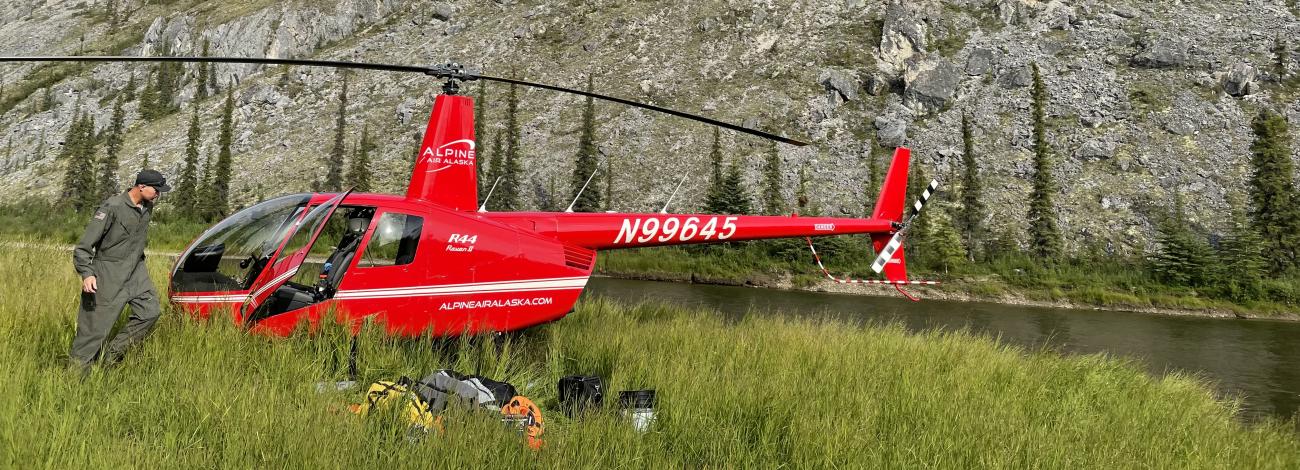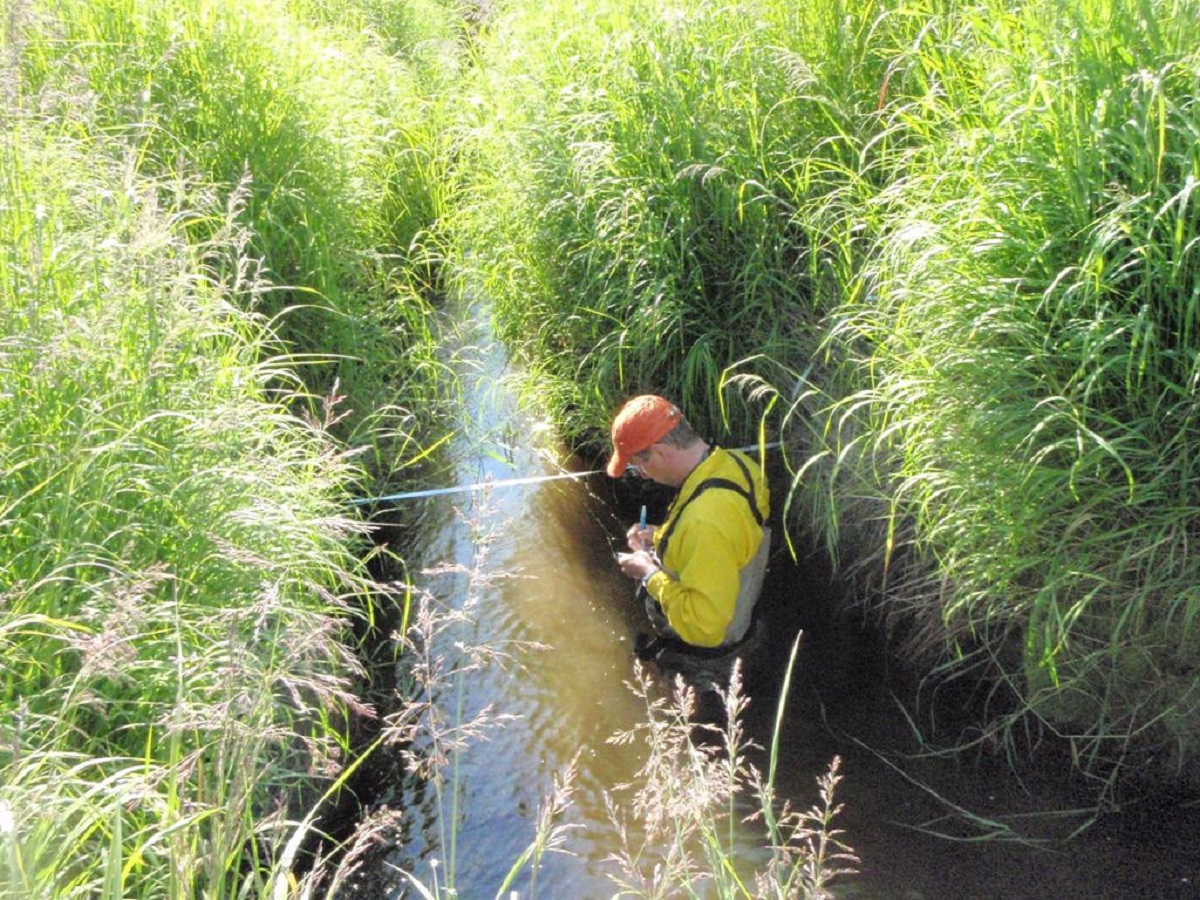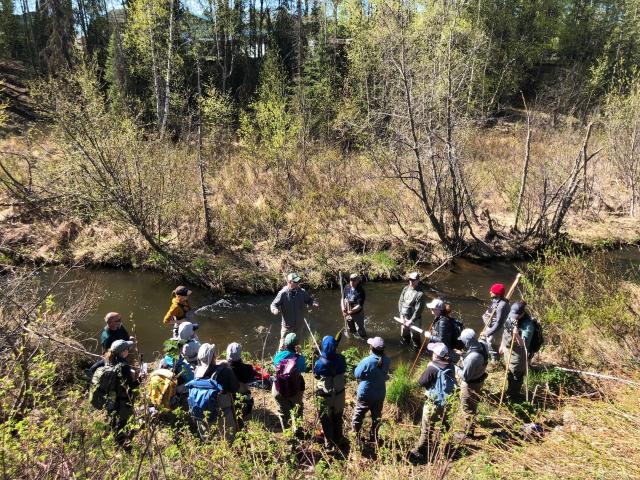
Alaska Fisheries and Aquatics
The Bureau of Land Management (BLM) manages extensive riparian and wetland areas, lakes, streams, and coastlines on public lands in Alaska. These habitats include over 178,000 miles of rivers, nearly 2.5 million acres of lakes, and more than 900 miles of coastline. Aquatic habitats are among the most important, productive, and diverse resources on the landscape. They provide clean water and habitat for countless species of plants, fish, and wildlife. They also help sustain cultures, economies, and food security for Native Alaskans and other rural residents across Alaska. Aquatic resources also support permitted activities on public lands, such as energy and mineral development, and many popular recreation opportunities, such as fishing and boating.
BLM Alaska’s Aquatic Resources Program includes a diverse group of specialists with expertise in hydrology, ecology, soil science, and fish biology. These staff maintain up to date inventories of resource condition and serve as key members of interdisciplinary permitting teams, which helps ensure that aquatic resources are effectively managed for the use and enjoyment of present and future generations.
Program staff work closely with partners to implement BLM’s Assessment, Inventory, and Monitoring Framework (AIM), which provides quantitative data and tools to inform land management decisions. Standardized methods used to inventory and monitor streams, wetlands, and riparian areas are essential for determining the health of these habitats across BLM-managed lands.
In areas impacted by past land uses, program specialists collaborate with stakeholders to implement restoration projects to improve the health of aquatic resources. Program staff also provide technical assistance to miners on stream reclamation planning and implementation, increasing the success and efficiency of reclamation.
How large is the program?
Field work in Alaska is challenging and expensive due to the remote and scattered nature of BLM-managed public lands. Roughly a dozen field staff including biologists and hydrologists implement the field-based program with support from their peers in the wildlife and plant conservation programs. Several senior program specialists located in the Alaska State Office provide technical program support. Field specialists face tremendous challenges given the vast resources they are required to inventory and monitor. A key component of the program includes strong relationships with partners to implement BLM’s mission.
Staff across the Aquatic Resources Program work closely with tribal, federal, state, industry, and other partners to accomplish common goals and leverage resources. Resource sharing and collaboration help maximize benefits to the public through reduced costs and increased efficiencies. Long term partnerships with the State of Alaska have greatly increased our understanding of fish species occurrence and habitat conditions across the state.
Collaboration with local Soil and Water Conservation Districts and members of the mining community have allowed the BLM to improve aquatic habitats in historically mined areas. This partnership has also helped shape and refine techniques that can improve and accelerate reclamation success at current mining operations. “Reclaiming mining’s legacy in Alaska’s Fortymile River” highlights successful reclamation partnerships completed by BLM’s Aquatic Resources specialists.
What are we aiming for?
Aquatic resources program staff collect and synthesize key information for managers which helps ensure the maintenance of healthy aquatic habitats, conservation of water resources, and sustainable fish populations for the enjoyment of future generations. Program staff also collaborate with partners to improve our understanding of resource conditions. Where aquatic resources have been adversely affected by past land use, these staff work to develop and implement restoration projects.
Why do we do this?
The primary function of the program is to collect and analyze information on stream and riparian habitats and fisheries resources and provide direction necessary for:
- Compliance with laws, regulations and policies
- Mineral and energy development
- Land-use planning
- Monitoring the effectiveness of management actions
- Stream and watershed restoration or habitat rehabilitation projects
- Management of fish species and habitats for subsistence use
- Recreation management


